
The first time I toured Câlția’s exhibition at MNAC Bucharest, I felt overwhelmed by symbols of war. At first glance, meanings pointing in other directions were undermined by visions of carnage, of bloody, poisoned, ravaged soil. As a matter of fact, Câlția’s exhibition alludes to historical events that the artist has lived through, from the Communist regime and the political transition that followed, to the on-going war in Ukraine and Putin’s influence, indicated by textual references in a series of drawings depicting monsters. But the exhibition does not focus solely on a single manifestation of Evil. Restoring an earlier theme in the artist’s work, the prints and the paintings speak about an Evil generating an even greater Evil, about a genealogical lineage of despotism, oftentimes incestuous and occult in its nature. Impressions of a Lived Time incorporates more aggressive themes than Stefan Câlția is generally associated with, such as the struggle against censorship, the ruin brought by Communism upon rural life and the perpetuation of tenebrous power structures. Fruit of two years of research, the exhibition also sheds light on biographical aspects of relationships the artist built during the Communist regime with partners from Norway, Germany and the Netherlands.
Seeing Câlția’s exhibition for the first time left a similar impression to when I first watched Come and See (Иди и смотри, 1985) by Elem Klimov. In the soviet film about The Great Patriotic War, the nazis, portrayed as some kind of berserkers, decimate the villages of Belarus to the point of ecocide, drowning all known life in absolute man-made evil, an evil exuding perversion and brute destructive force, turning the soil into a toxic swamp. One scene in particular stuck with me. While out in the field at night, Fliora’s cow is pierced by multiple red beams, while another red light slowly descends from the sky. The cow collapses, its eyes twitching inside their sockets before the animal finally takes its last breath. Fliora falls asleep laying on the cow’s corpse and wakes up in the morning shrouded by fog. The cow butchered by the nazis could be considered a distant relative of the bull of Șona, whose picture covers a great portion of the wall which Câlția dedicated to the cyclical life of the peasants who were bound to their land before the great Evil came upon them.
Another connection that I couldn’t help but make when I visited Impressions of a Lived Time, was an almost transcendental moment from an adaptation of Chekhov’s The Seagull, staged last year at the National Theater Bucharest by Eugen Jebeleanu. In the scene I’m referencing, Nina shrieks out Treplev’s discourse on new forms, in Russian, while her head is being covered and she is being tied up, as a reference to a protest in Tallinn against violence towards women during the current war. At the same time, two LEDlights fall slowly from above like bombs, while the recited text scrolls on a screen over images of pro-Ukrainian protests. Despite all the specific references, this theatrical moment succeeds in transcending a particular historical time and place. Through an association of references, Jebeleanu aims to stir up a general feeling of terror in connection to the subject of war and the authority of Evil. Every blue and yellow flag on the screen becomes a universal symbol of resistance in a world overrun by chaos, where the general feeling of danger turns the world upside-down, activates the reptilian brain and the sympathetic nervous system. Similarly to Câlția’s exhibition, through quotes from Mihail Siskin, this scene in the play touches upon a topic difficult to mention: the presence of Russian artists and thinkers supporting the other side of the barricade. But I believe the easiest way to convey the overwhelming feeling of terror that both Cîlția’s exhibition and Jebeleanu’s staging share is thorough quoting the fragment in Chekhov’s play which I described above:
All men and beasts, lions, eagles, and quails, horned stags, geese, spiders, silent fish that inhabit the waves, starfish from the sea, and creatures invisible to the eye—in one word, life—all, all life, completing the dreary round imposed upon it, has died out at last. A thousand years have passed since the earth last bore a living creature on her breast, and the unhappy moon now lights her lamp in vain. No longer are the cries of storks heard in the meadows, or the drone of beetles in the groves of limes. All is cold, cold. All is void, void, void. All is terrible, terrible— The bodies of all living creatures have dropped to dust, and eternal matter has transformed them into stones and water and clouds; but their spirits have flowed together into one, and that great world-soul am I! In me is the spirit of the great Alexander, the spirit of Napoleon, of Caesar, of Shakespeare, and of the tiniest leech that swims. In me the consciousness of man has joined hands with the instinct of the animal; I understand all, all, all, and each life lives again in me[1].
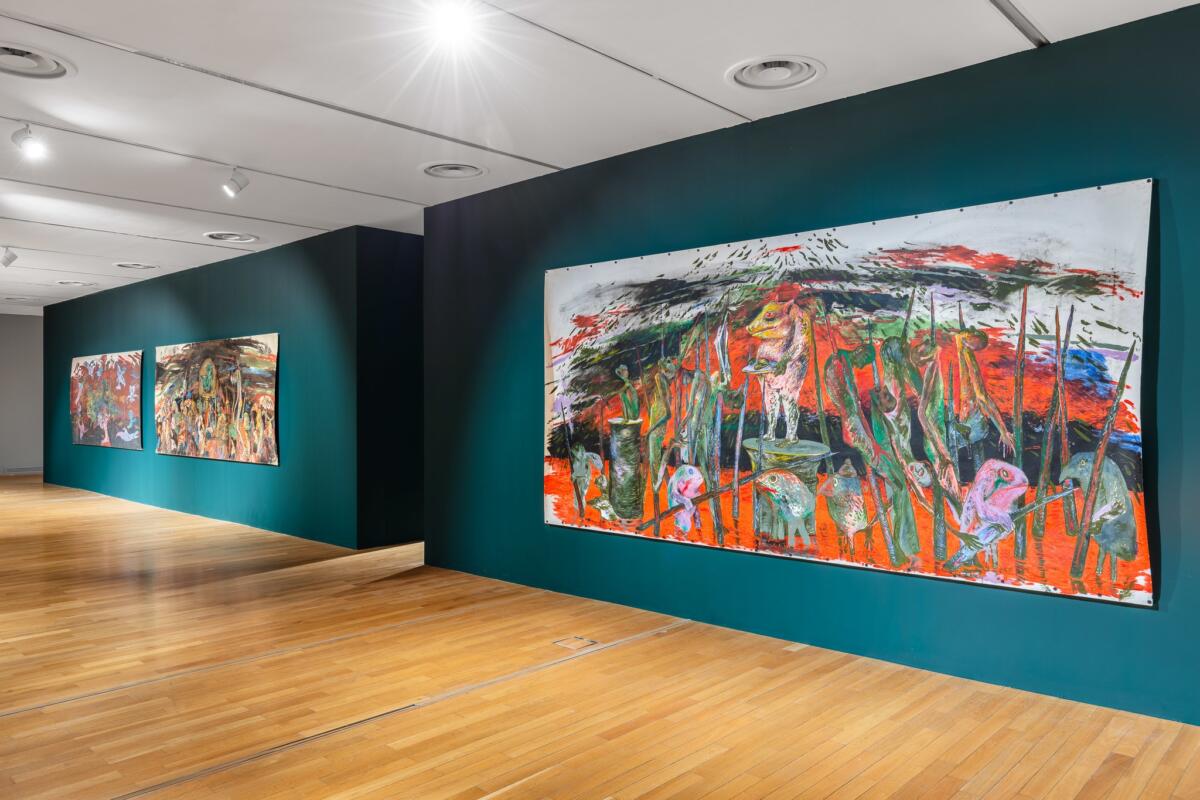
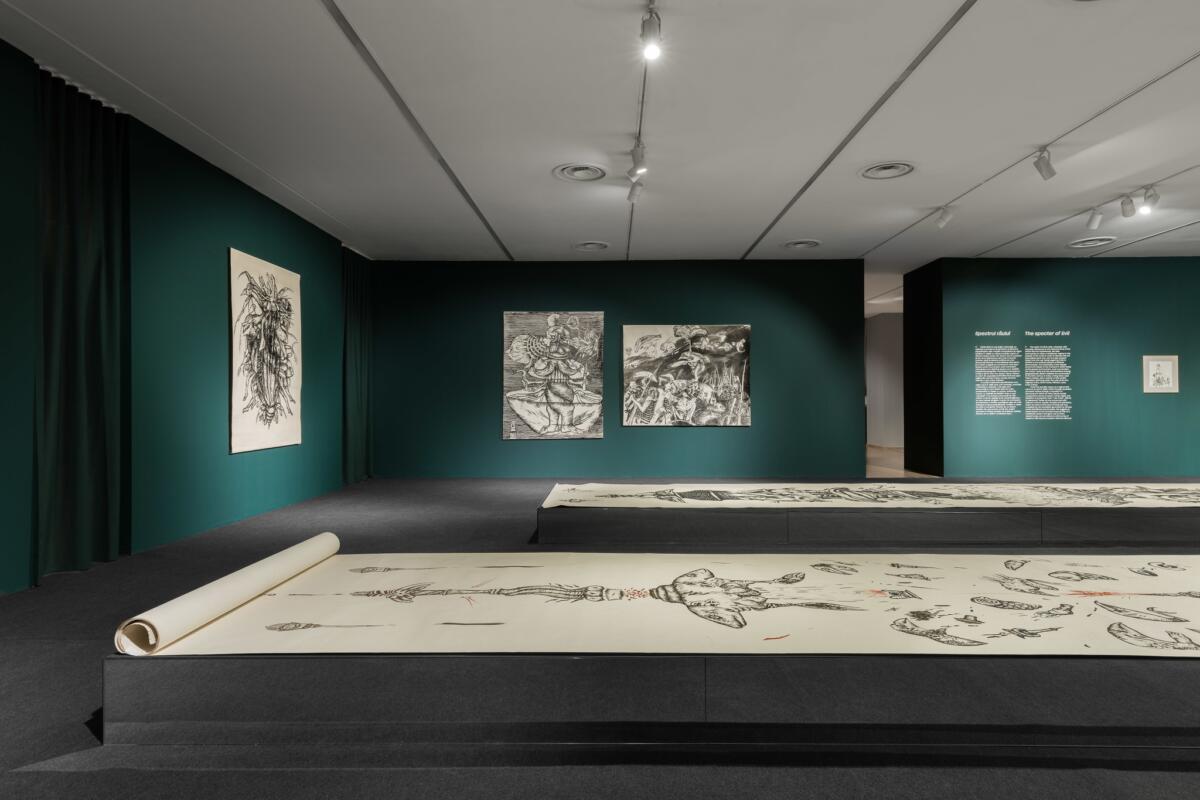
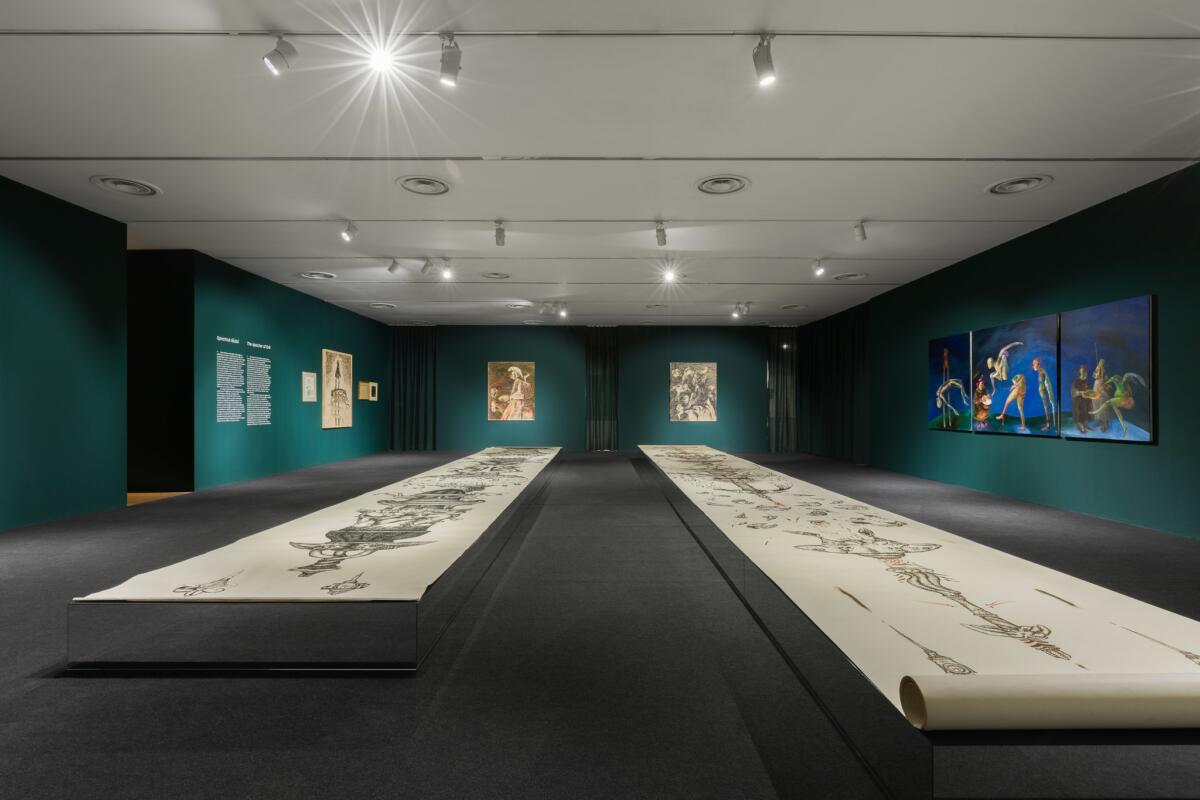

In this exhibition, Câlția’s characters appear to carry different connotations than we are familiar with. As per usual, one can identify recurring motives which, through their very repetition, gradually change their form and significance. There is an unperturbed corner of Șona, depicted in images of the aforementioned bull and the young father of the painter among other peasants, spread across an entire wall. The exhibition further introduces us to the horrors inflicted by genocidal Molochs, by green pigs and monkeys ordering impalements, suppressing riots and leading wars, all present in the violent and terrifying triptych opening the exhibition (consisting of the works Composition, The Dance of Evil and The Red River). Upon closer look, one can identify a similar composition or characters belonging to the same species going from one work to another. Câlția’s language is dense and heavy, loaded with meanings which can easily elude interpretation, and remain incomprehensible or ineffable symbols. In the spirit of Bosch or Breugel, even upon repeated viewing, a new character or previously unnoticed situation surfaces, completely shifting the emotion and meaning of the entire exhibition. In her 1989 book on Stefan Câlția, art historian Amelia Pavel claims “the repetition of the unexpected, emerging from a different context each time, surely assists the effort, yet it does not immediately – or ever fully – resolve the enigma.”[2]
‘Directed by a hidden order’[3], Câlția’s creative universe continuously generates a zoomorphic amalgamation, the most common exhibits being the hybrid, ominous bird (such as the recurring sinister “owl from Cotroceni”), the snake (often ambivalent in Câlția’s work, oscillating between embodying the devil and temptation and the chthonic, wise, healer), the frog (usually benevolent and comical, but malevolent here, maintaining its symbolism of the power of nature, but partaking in the wickedness), the horned creatures (usually representations of tenderness in Câlția’s work), and the fish (symbol of vitality and abundance, floating over the hills of the Șona, not yet touched by calamity, and guarding the relationship between man and his environment, which can very easily slip and erode)[4].
The exhibition incorporates a series of hybrid aberrations, chimeras made up of fish, lizards, beetles, frogs, bats. Many of the characters in the exhibition have their mouths covered with fruit, frogs or fish, sometimes their bodies are pierced by stakes which are coming out through their mouths, other times their ears are stuffed with feathers. Because under the authority of Evil, people cannot speak and feel freely. From the invasion of Czechoslovakia in which the Red Army indiscriminately destroyed all villages in its path, to the transition of the “owl” that grips in it’s claws the stakes by which countless people had been sacrificed; these cues could even lead the viewer to think about the diffuse fear that the leadership of the Secret Services generates in our country at the present moment. As I have already implied, Câlția speaks about evil authority in a general sense, even though the metaphors he uses are most often pointing towards the type of Evil that he has experienced or that has triggered him. The painter declares that for him, “the idea that evil begets evil”[5] is central.
An important moment in the exhibition is the presence of the double work Large Drawing or Stampede of Monsters, which was created during New Year’s Eve between ’92 and ’93, as a reflection on the Mineriads and the previous year’s elections. Two columns drawn on two large paper scrolls, with two self-generating monsters; one tense, closed in on itself but still deadly, and the other extended, spewing drops of blood and corpses. The work is a commentary on the political situation following the revolution, on the “communism that begets neo-communism”[6]. It is a tight network of eyes that oversee, of tortured and killed flesh, of explosions and blood baths. The monster, impersonal, made up of several human bodies, is holding on to its power.
Also noteworthy is the painting The Chemists, a UTC (Union of Communist Youth) commission in which the chemical plant in Făgăraș is represented in a stylized form. Through pipes of various sizes, the final product flows into the lab’s only flask, held by the only worker, floating in a steamy factory.
The triptych The World as a Theatre, a complex presence made in the late 1980s, is an allegory of life under dictatorship. A fantastic, even picaresque procession, is invalidated by the clowns indicating that this is nothing more than a painting on a curtain. The carriages on the curtain carry people led by ideology. The carriage is effortlessly pulled by a sinister character led by the one it reflects, the coach, a batrachian, corresponding to the “idiot harnessed to an ideology”[7] who leads “forward”[8] towards a brutish abyss. The batrachian is accompanied by his soldiers, suspended upside-down, holding wooden spears. Also present in the triptych is a character resembling a boudoir-esque angel, looking rather decrepit, as well as abrassy character holding a succulent – the ability of life to continuously multiply. All these associations lead us to perceive the world through the lens of dark occultism, far from an accurate image of what is truly around. In the carriage with the batrachian sits the old veiled woman, the protector of the house, from within whom light spreads and who avoids the ridicule around her. The characters around the curtain remind us that this world can be replaced with another – the clown who speaks the truth turns reality upside down making it seem like a circus. The freedom and innocence of the small green bird is protected by the clown, showing us that reality has the potential to change from a macabre one to a more cheerful one.

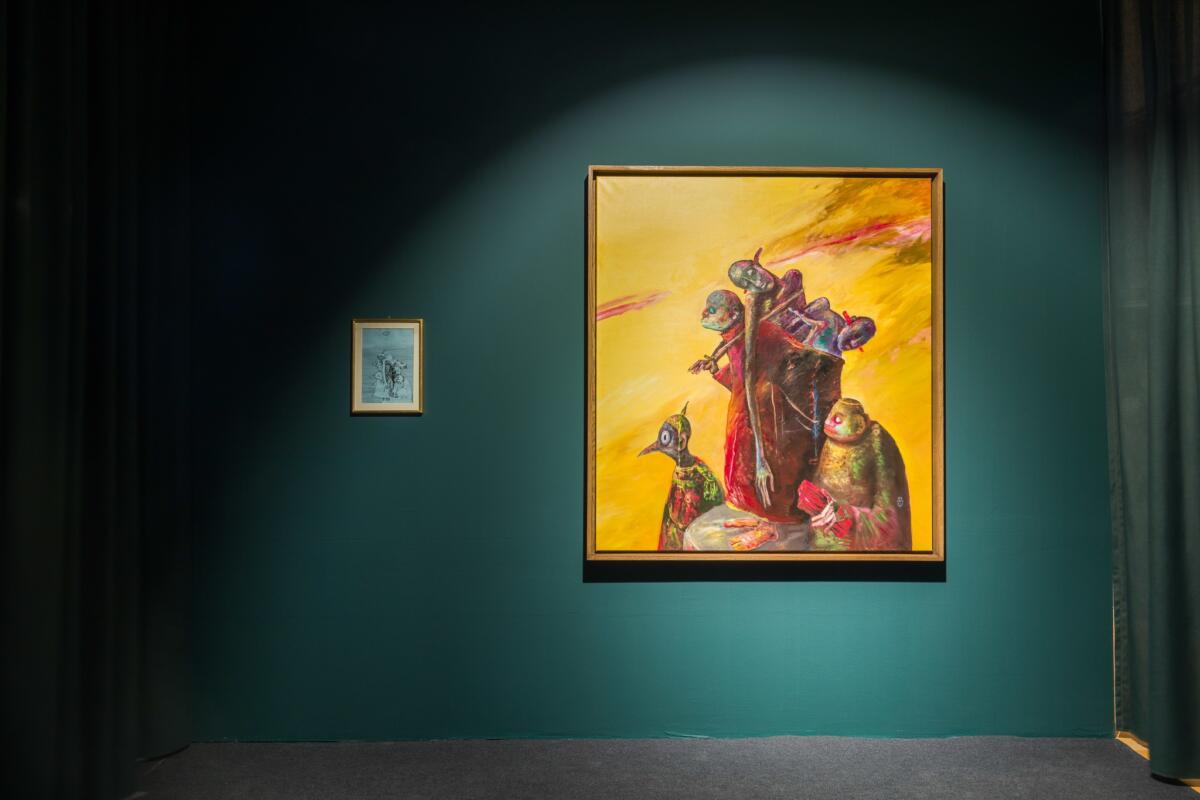


Stefan Cîlția’s demonstration at MNAC Bucharest is the materialization of his creative turmoil that began in the organic reality of the countryside, always beset by danger, from the Șona of his paintings and of his ancestors. Șona, along with the country and the region where it is located, experiences a succession of Evil regimes generating one another, up until this uncertain moment of unprecedented prosperity that feeds on destruction and is always vulnerable to an even greater destruction.
The exhibition Impressions of a Lived Time was curated by Alexandra Manole and Cătălin Davidescu with the support of the Ștefan Câlția Foundation for the National Museum of Contemporary Art in Bucharest and was exhibited between December 8, 2022 – April 16, 2023.”
Translated by Eliza Radulescu
Edited by Katie Zazenski


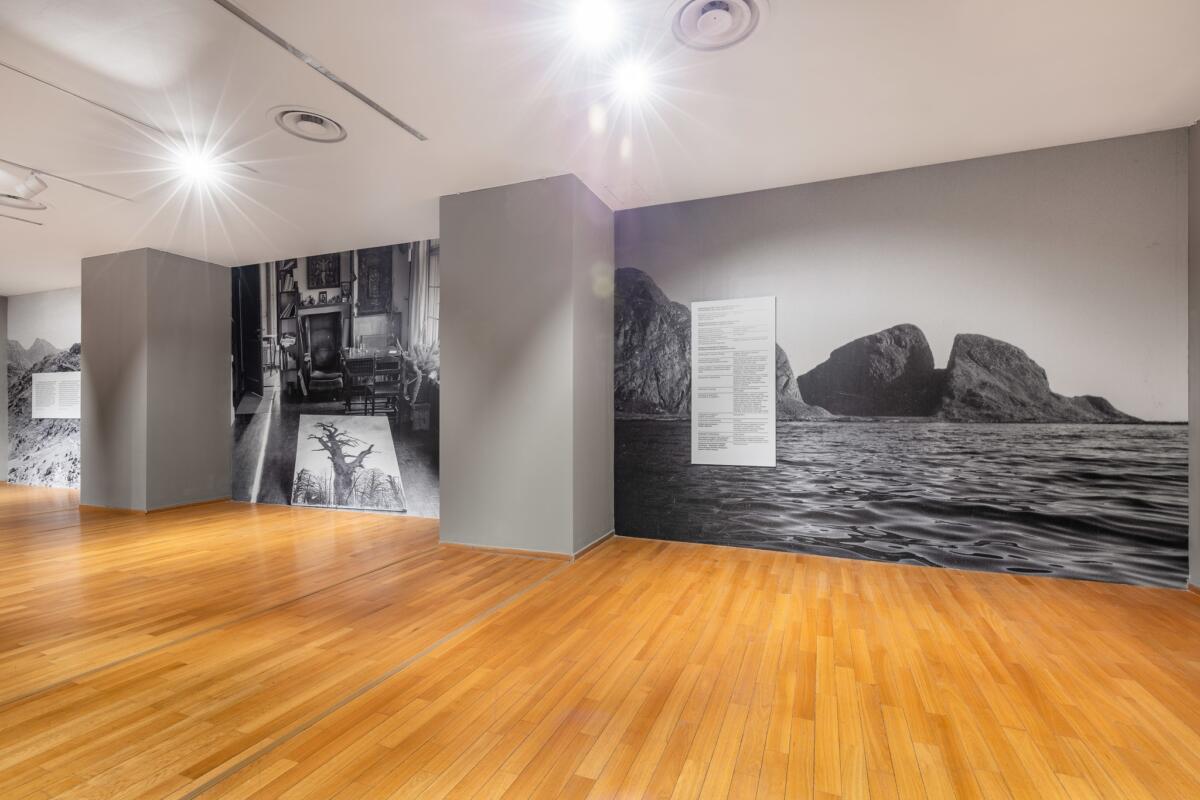

[1] Anton Checkov, The Seagull: A Play In Four Acts (Auckland, The Floating Press, 2008), pp. 22-23
[2]Amelia Pavel, Ștefan Câlția (Bucharest, Meridiane, 1989), pp. 6-32
[3]Ibidem
[4]Ibidem
[5]I II III IV V VI VII Povesti cu / stories with Ștefan Câlția (Bucharest, UNArte, 2013), pp.223-230
[6] Ibidem
[7] Ibidem
[8] Ibidem
Imprint
| Artist | Ștefan Câlția |
| Exhibition | Impressions of a Lived Time |
| Place / venue | National Museum of Contemporary Art in Bucharest |
| Dates | December 8, 2022 - April 16, 2023 |
| Curated by | Alexandra Manole and Cătălin Davidescu |
| Index | Alexandra Manole Bogdan Balan Cătălin Davidescu Eliza Radulescu National Museum of Contemporary Art in Bucharest Ștefan Câlția |



